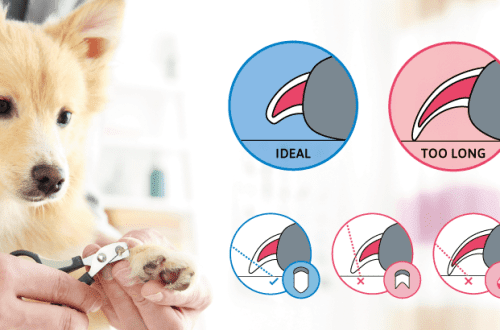
Aretina amin'ny alika: famantarana, aretina ary fitsaboana
Just like humans, dogs can experience sprains and sprains in the limbs, including the ankles and other parts of the paw. The main sign of this condition is that the pet limps on a walk or barks when making certain movements.
The good news is that most paw sprains in dogs are not an emergency and are easily resolved. Much in this situation depends on the owner. With some basic knowledge, it is possible to arrange treatment for knee ligaments in dogs even at home.
Hevitra ato Anatiny
Fanenjanana ny ligaments sy ny hozatra
Sprained muscles and tendons are one of the most minor injuries that cause a dog to limp. A pet can get such an injury if the connective tissue with which the muscle is attached to the bone is damaged.
A sprain is an injury to the ligament that connects two bones. This disease is very common in animals, especially overweight pets and very active dogs that run and jump a lot. While most sprains occur in the extremities, they can occur in almost any part of the body.
Signs of a Sprain in a Dog
The first symptom of a sprain in dogs is lameness, which indicates that the dog is in pain. There may also be swelling.
If the paw becomes warm or hot, it is unlikely that the lameness is caused by a simple stretch. Lameness may continue, and the muscles in the pet’s paws weaken over time. When atrophy occurs in one limb, the opposite limb takes on additional pressure and load. As a result, a healthy limb is also at risk of ligament damage.
A veterinarian will likely be able to accurately diagnose the cause of lameness in one visit. According to the Merck Veterinary Manual, a specialist will likely perform an examination of the injured limb and may also order imaging studies such as x-rays and MRIs. He may also take a blood test to rule out infectious causes such as Lyme disease. It will also help to check if the dog will be able to take certain medications.
Do dogs get ankle sprains?
Due to the fact that a person is upright walking, his ankles bear the brunt of the weight and load when walking. Unsurprisingly, ankle sprains are the most common type of sprain in humans.
The dog’s weight is distributed differently. The main part of the load and pressure of the animal’s body weight falls on the knee joints of the hind legs. Therefore, four-legged friends are more prone to knee sprains than ankle sprains.
One of the most common orthopedic conditions in dogs is a cruciate injury. It causes a tear or partial tear of the cranial cruciate ligament in the knee. This injury is most common in medium to large dogs, although it can occur in all sizes in general.
Treatment for sprains in dogs
Every dog owner faces the problem of lameness at least once in their life. But if the pet is very lame, or if the ailment is accompanied by lethargy, loss of appetite, bad mood, or progresses, it’s time to call a veterinarian.
Lameness can have many different causes, so choosing the right treatment is possible only after a specialist accurately diagnoses the condition of the dog.
If the veterinarian suspects that a four-legged friend has a sprain, he should be given the necessary rest. Your doctor may prescribe non-steroidal anti-inflammatory drugs such as carprofen or meloxicam, cold compresses, or a weight loss diet. In some cases, experts recommend surgery.
While mild CCL injuries can be treated with rest and medication, in most cases the dog will eventually need surgery. Several procedures are performed to treat an injury, and although a general veterinarian will most likely be able to perform the operation himself, it is likely that he will give a referral to a veterinary surgeon.
Sprain Prevention
Overweight dogs are more likely to suffer from ligament damage, including cranial cruciate damage. By maintaining a healthy weight in pets, you can reduce the chance of sprains and injuries that lead to lameness. You should also talk to your veterinarian about nutritional support. If the specialist determines that the dog is obese, he may recommend a therapeutic diet. This will help the animal approach normal weight. A diet that promotes joint health and mobility can also help.
Since dogs most commonly injure their limbs from jumping, you should consider not allowing your pet to climb on furniture, such as sofas or beds, or arrange for an easier way for him to get down, such as stairs or a ramp.
Prognosis for sprained paws in a dog
Although sprains are more serious than simple muscle and tendon strains, most dogs fully recover from these injuries.
The biggest challenge most owners face is getting active and energetic pets to live a quiet life for about six weeks. If the ligaments do not heal completely, there is a risk of re-injury. Chronic injuries often result in the need for surgery, so follow your veterinarian’s instructions and do everything you can to limit your pet’s movement, even if it means resting in the cage.
Jereo ihany koa:
- Inona no tokony hatao raha voan'ny aretim-pivalanana ny alikanao
- vaksiny puppy
- Aretim-po amin'ny alika: soritr'aretina sy fitsaboana
- First aid for a pet





